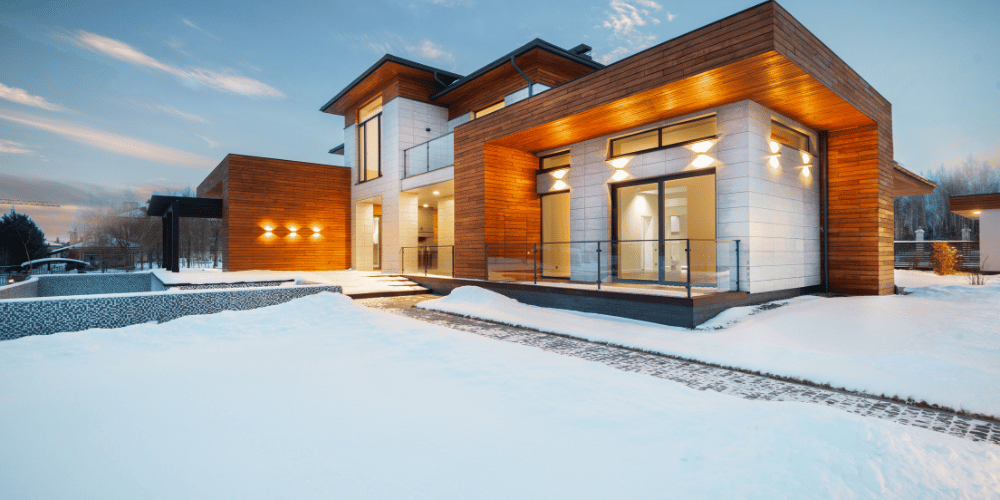There’s a question that many people ask themselves when considering where to buy a house. Are high-end neighborhoods worth it?
A high-end neighborhood typically refers to an area with upscale amenities and services. They often include expensive homes, luxury shopping, and exclusive restaurants.
There are many benefits to living in a high-end neighborhood. These include access to quality schools or increased safety and security. However, the cost of living can be prohibitive for some people.
In this article, we will explore the pros and cons of living in a high-end neighborhood. This way, you can decide if it’s right for you. We will consider factors like access to the features and benefits that interest you. We’ll also discuss investment potential for future returns on property value.
Do these benefits make up for the cost associated with living in a high-end neighborhood? By the end of this article, you should have all the information needed to determine if an upscale neighborhood is right for your lifestyle and budget.
Benefits of Living in a High-End Neighborhood
One of the main benefits of living in a high-end neighborhood is access to amenities and services. Most upscale neighborhoods feature luxury shopping, exclusive restaurants, and other desirable features that are not typically found in other areas.
In addition, many high-end neighborhoods also have access to quality schools or educational opportunities that may not be available elsewhere. These educational opportunities can provide children with an edge when applying for college or pursuing higher education later in life.
Another advantage of living in a high-end neighborhood is increased safety and security compared with other areas. Upscale communities often feature gated entrances or private security personnel who patrol the area on a regular basis. This provides residents with the peace of mind that their homes and families are safe from crime and vandalism.
Furthermore, many upscale neighborhoods also offer community centers such as pools, tennis courts, playgrounds, or fitness clubs. People can go to relax and enjoy recreational activities without having to worry about their safety while doing so.
Investment potential for future returns on luxury real estate is another benefit associated with living in a high-end neighborhood. Properties located within upscale communities generally appreciate faster than those located outside of them.
Homes in upscale areas tend to have well-manicured lawns, elegant landscaping, and attractive exteriors that make them stand out from other properties. This adds to the overall desirability of these neighborhoods and helps homeowners feel proud of where they live.
Curb appeal can help increase property value by making homes more desirable for potential buyers should homeowners decide to put their houses on the market.
This is due to the desirability factor associated with these areas. This means that homeowners have the potential for significant financial gain should they decide to sell at some point down the road.

In luxury properties, an upgraded kitchen and a remodeled bathroom are common features that enhance the overall appeal and functionality of the home. These spaces often showcase high-end materials, state-of-the-art appliances, and exquisite finishes that exemplify sophistication and modern living.
A luxury kitchen might include custom cabinetry, marble countertops, and professional-grade appliances, while a remodeled bathroom could feature spa-like amenities such as rain showers, soaking tubs, and elegant vanities. These upgrades not only elevate the aesthetic appeal but also significantly increase the property’s market value.
Drawbacks of Living in a High-End Neighborhood
One of the primary drawbacks associated with living in a high-end neighborhood is the higher cost of living than other areas. In many cases, a luxury neighborhood means an expensive neighborhood.
Upscale neighborhoods usually feature expensive homes, luxury shopping, and exclusive restaurants that come with a hefty price tag. This can make it difficult for some people to afford living in these areas even if they are able to purchase their home outright.
Also, many upscale communities also have higher property tax and homeowners insurance than other neighborhoods. This can add to the financial burden associated with ownership.
In addition to the high cost of living, another potential drawback is lack of diversity compared to other neighborhoods. Upscale communities often feature homogeneous populations. This is due in part to shared socioeconomic status amongst residents.
This means that certain cultures or lifestyles may be underrepresented within these neighborhoods. It could make them potentially uncomfortable places for those who do not fit into the mold.
Limited access to public transportation or walkability options may be an issue for those who live in a high-end neighborhood. Many upscale areas are located further away from city centers and major thoroughfares which can make traveling by foot or bike difficult.
Bottom Line
Living in a high-end area can provide many benefits, including increased safety and security. You have access to more amenities, services, schools, or education opportunities.
There is also potential for investment in future returns on your property’s value. However, these benefits must be balanced against the disadvantages. A higher cost of living, fewer options for walking or public transport, and a lack of diversity should be considered.
In the end, it’s up to you to decide whether the pros outweigh the cons, but hopefully, this has helped with your decision.


